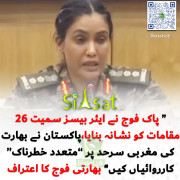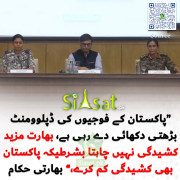modern.fakir
Chief Minister (5k+ posts)
Ofcourse...their is no alternative for hard work.. we do need to get more institutions like Oxford, cambridge and Harvard and we also need to work more in R&D and technological areas and we are progressing but Alhamodlillah NEVER at the expense of our deen.
Thanks for your positive comments brother!
Thanks for your positive comments brother!
You rightly said it. Thats one of the factor, that puts us behind the indians, I work at Pwc London, i have seen this, the kind of mingling between the indians and british will make u surprise, drinking, get together and dating. Thats tells alot, the british love them for being socialized with them. But to some extent i also believe that if you are technically good enough at your job or creative in your field. You can overcome that issue as a muslim. There is only one solution to that we as Pakistani need to work hard in education and R&D.Pakistan need houndreds of new universities advanced in hightech. With the likes of IIT, if we have that kind of institutions and without any political interference i believe we have very talented students in our country, all we need is commitment, dedication, hardwork and most importantly we need to have more R&D centers.





































